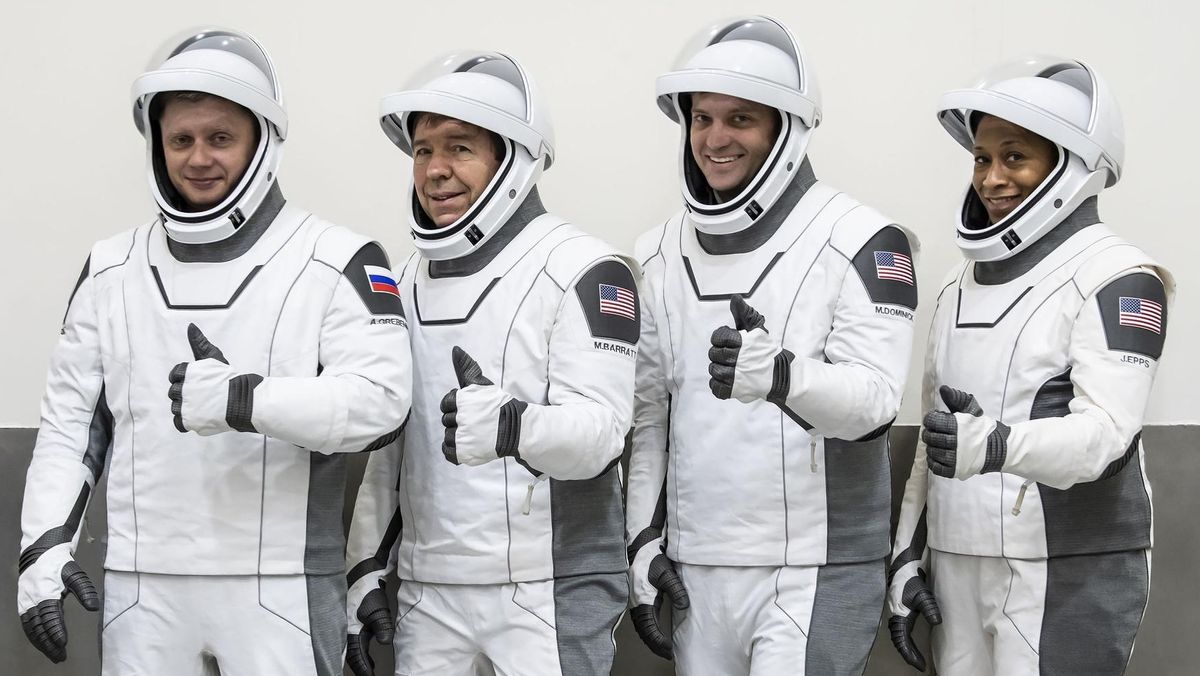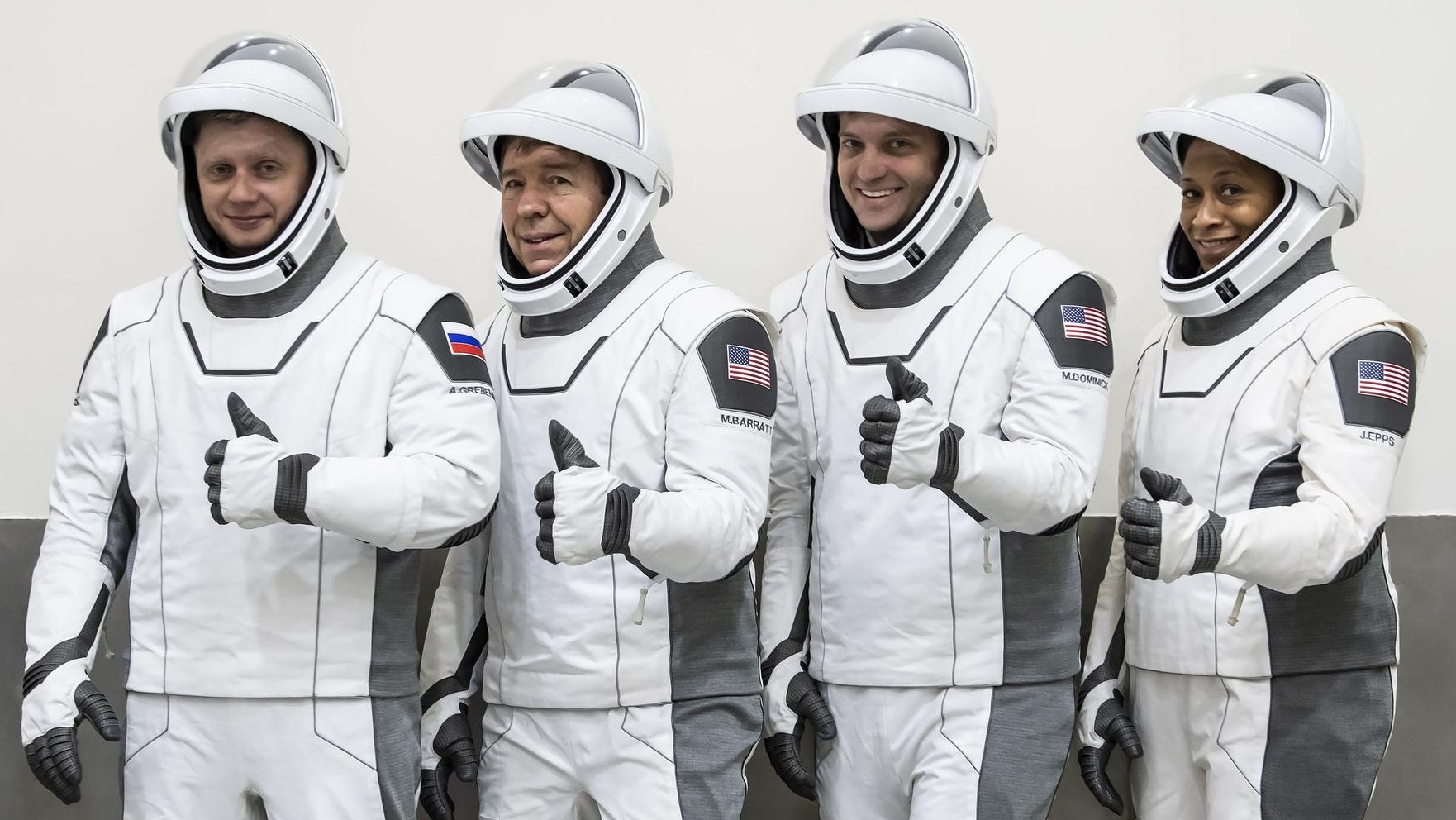The next International Space Station crew will lift off no earlier than late February after a moon mission clears the same launch pad, NASA officials announced today (Jan. 25).
Crew-8 will launch a quartet of astronauts aboard the SpaceX Crew Dragon spacecraft from Pad 39A at NASA’s Kennedy Space Center (KSC) in Florida, for a half-year International Space Station (ISS) rotation. On board will be NASA astronauts Matthew Dominick (commander), Michael Barratt (pilot), and Jeanette Epps (mission specialist), along with mission specialist Alexander Grebenkin, of the Russian space agency Roscosmos.
“In terms of a launch date, we are looking at a late February timeline,” Steve Stich, the manager of the commercial crew program at NASA’s Johnson Space Center in Houston, said at a briefing Thursday livestreamed on NASA Television.
The launch date will give time for Intuitive Machines’ first moon lander, with NASA and other payloads on board, to leave Earth via a SpaceX Falcon 9 rocket from Pad 39A before Crew-8, he added. That private moon mission, known as IM-1, is targeted for no earlier than Feb. 14, per Spaceflight Now’s launch calendar.
As its name suggests, Crew-8 is the eighth operational astronaut mission that SpaceX will fly to the ISS for NASA. The timing of the astronaut launch will very much depend on IM-1’s status, Stich emphasized.
If IM-1 goes on time, Crew-8 would fly perhaps around Feb. 29 or March 1 from the Pad 39A, which SpaceX leases at KSC. But if IM-1 misses its narrow monthly window to reach the moon when lighting conditions are favorable for a landing, Crew-8 would stay groundbound until at least March 22 (assuming IM-1 departs in March).
While three of the Crew-8 astronauts are on their first mission, this is Barratt’s third trip following flights in 2009 (ISS Expeditions 19-20) and 2011 (the space shuttle’s STS-133).
The new crew will serve as relief for the SpaceX Crew-7 astronauts who launched on Aug. 26: the European Space Agency (ESA)’s Andreas Mogensen, NASA’s Jasmin Moghbeli, Japan’s Satoshi Furukawa and Russian cosmonaut Konstantin Borisov.
The other Expedition 70 astronauts on board the ISS all launched on Russia’s Soyuz MS-24 mission on Sept. 15: NASA’s Loral O’Hara and Russia’s Oleg Kononenko and Nikolai Chub.
Crew-8 will serve through the transition between Expeditions 70 and 71. Stich said the crew will return to Earth no earlier than August 2024; based on past space station rotations, Crew-8 will head home after SpaceX’s four-astronaut Crew-9 flight arrives at the ISS for Expeditions 71/72.
Crew-8’s Epps will be the second Black woman to serve on an ISS long-duration mission, following Jessica Watkins in 2022. Epps was assigned to an ISS mission previously but was removed late in the training of the Expeditions 56 and 57 crew that served on the station in 2018.
Epps was immediately eligible for other space missions and was initially assigned the debut Starliner-1 crewed mission using Boeing’s new spacecraft. But Epps was reassigned again to Crew-8 following lengthy delays in launching Starliner, which will be the second commercial crew vehicle to fly missions for NASA, after Crew Dragon.
Crew-8’s astronauts may welcome the first Starliner mission with astronauts, called Crewed Flight Test (CFT), to the orbital lab in mid-April or so. CFT will bring veteran NASA astronauts Barry “Butch” Wilmore and Sunita Williams to the ISS for a short shakedown cruise.
An all-private crew on board the ISS right now, however, should be back at home by the time Crew-8 launches. That private crew, Axiom Space‘s Ax-3, launched Jan. 18 with SpaceX for a forecasted two-week mission at the ISS. It should touch down again on Earth around the second week of February.
Ax-3 includes former NASA astronaut Michael López-Alegría, Italian mission specialist Walter Villadei (who also flew in space for a few minutes aboard Virgin Galactic‘s Galactic 01 suborbital spaceflight on June 29, 2023), Turkey’s first astronaut Alper Gezeravcı, and ESA astronaut reserve member Marcus Wandt.












